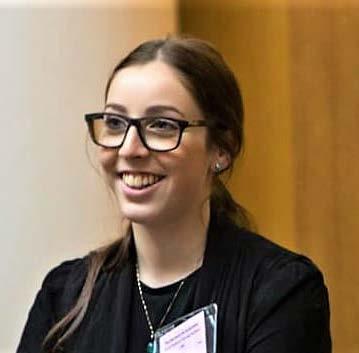
6 minute read
Campaign Wrap-Up: Looking forward to looking forward.

Often I am grateful that Australia has far shorter election campaigns than the United States. In the period that more than 20 major candidates have announced their intent to run against Donald Trump, Australia has managed to nominate (and lose) a vast swathe candidates for the House and Senate across Australia. In short pace, we will know the outcome of this election - I’ll take one month over two years any day.
Advertisement
Thankfully, this year’s campaign has been shorter than the last. 2016’s staggering six weeks on the trail exhausted the energy and patience of politicians and voters alike. But where last time Opposition Leader Bill Shorten was able to pick up steam as Election Day approached, this year both leaders have worn themselves into the ground.
This was no clearer than at the final leader’s debate at the National Press Club; both sounded tired - but also tired of repeating the same lines ad nauseum. The decision to allow them to ask each other two questions each was, I thought, an inspired one - something to finally break the monotony. Prime Minister Scott Morrison’s question to Shorten regarding superannuation changes (a refreshing change from the constant back and forth over dividend imputation) opened a part of the economic debate not particularly well litigated in this campaign. By the same token, Shorten’s question on cancer treatment was a stark reminder of the comparatively small role of health in this campaign, compared to the infamous ‘Mediscare’ argument of 2016.
Both questions, and the other questions posed by the leaders, spoke to the central dynamic of the campaign. All four related specifically to policy announcements made by Labor. Much of the turf of this election has been on Labor’s plans, whether on their reforms to the tax system, climate change, or increasing access and affordability for public services. Whilst Shorten has been spruiking the merits of his policy, Morrison has done little else whilst travelling the country than ask (necessary) questions about the cost of change.
It remains to be seen which way Australians will go; whether they accept Shorten’s ideas, or heed Morrison’s warnings. Many in the commentariat have hearkened back to John Hewson’s 1993 defeat to explain why a radical policy platform from opposition proposing to move the country in a new direction may not have the intended results. Fightback! - the infamous 650 page policy document which kept the Coalition in opposition for another three years - will undoubtedly make the commentary pages if the Labor party does not seal the deal on the 18th.
Looking back at Fightback! Is not an exercise in nostalgia for me. After all, the 1993 election was fought three years before I was born. But it does seem a parable worth taking note of. In Fightback!, Hewson and the Liberals set out to, in their own words, “achieve a generational change in policies and attitudes that will give individual Australians greater control over their own lives”. Whilst Labor’s policy platform is detailed and features reforms in most every area of policy making, it would seem that this is what it lacks - what George Bush Sr. called “the vision thing”.
Australia has suffered from a dearth of long term thinking in the last two decades of policy making - an absence of governments with enough of “the vision thing” to articulate what Australia should look like. Never mind tinkering with the tax brackets, or fluctuations in expenditure on services like the ABC (which mostly signal what a party is against rather than what it believes). This campaign has sorely lacked a credible overarching tone or shape from either of the major parties. Shorten has laid out, to quote Kevin Rudd, “an agenda of work to prosecute”; whilst Morrison has painted a nightmare picture of higher taxes and fewer jobs under a Labor government.
The dynamics of this campaign in the context of global political disruption are interesting. Compared to three years ago, the Hanson phenomenon has receded sharply. Once spoken of in the same breath as Trump and Brexit, Hanson is unlikely to retain all three of the Senate seats she brought with her in 2016 - and recent dalliances with the NRA have done real damage to her nascent credibility. And whilst Clive Palmer’s outsized red ties and boasts about having a net worth of “four thousand million dollars” were designed to drum up the same kind of interest as the current occupant of the White House, it remains to be seen whether the electorate truly believes that he knows how to “make Australia great”.
The more interesting disruptors appear to be the independents running in safe Coalition seats. Drawn into the fray by the example of newly minted Wentworth MP Kerryn Phelps, these candidates are eager to seat themselves firmly between the parties and present a credible choice for renewal on the more economically conservative side of politics. Zali Steggall’s campaign in Warringah has achieved enough cut-through to make Tony Abbott nervous, and there are signs of concern about Farrer (previously held by Deputy PM Tim Fischer) and Cowper. Labor’s big economic reforms and the Coalition’s inaction on climate change have handed them a perfect road map to the “sensible centre”.
There are a significant number of contests beyond the two-party binary this year - whether between the Coalition and Independents, Labor and the Greens, or some other combination of all the above (like Gilmore, which has metamorphosed into a four-way Liberal/National/Labor/Independent monstrosity of a campaign) - the national two-party preferred vote is no longer the indicator of success that it once was.
Whoever takes up residency in the Lodge once all of the votes are counted will certainly have a lot of work to do. With the rise of China on the global stage, our economy and our political system will require a great deal of monitoring to respond to the attendant opportunities and challenges. Both parties have signalled an understanding that our most important geopolitical role lies with our influence in the Pacific - and how they adapt to new operating parameters will certainly be of great importance for our future.
I ran a couple of informal polls on Instagram (that great political modelling tool) in the wake of the first and third leader’s debates in the last two weeks. One thing was clear - regardless of whether people supported one side of the other, they were deeply unlikely to give up an hour to watch the leaders trade barbs and argue over quotidian details. Voters are signalling this with their feet in two notable ways; the significant rise in early voting, and a growing proportion casting a vote for someone other than the major parties. Long term thinking has been in short supply over the course of this campaign. Even once all the votes have been cast, it’s unclear what the next government will do to arrest this trend (if anything). Certainty is probably a mug’s game in politics, but I think one thing is for sure; if we voters wait to fall in love, we’ll have a long wait.

Bill Shorten and Scott Morrison




